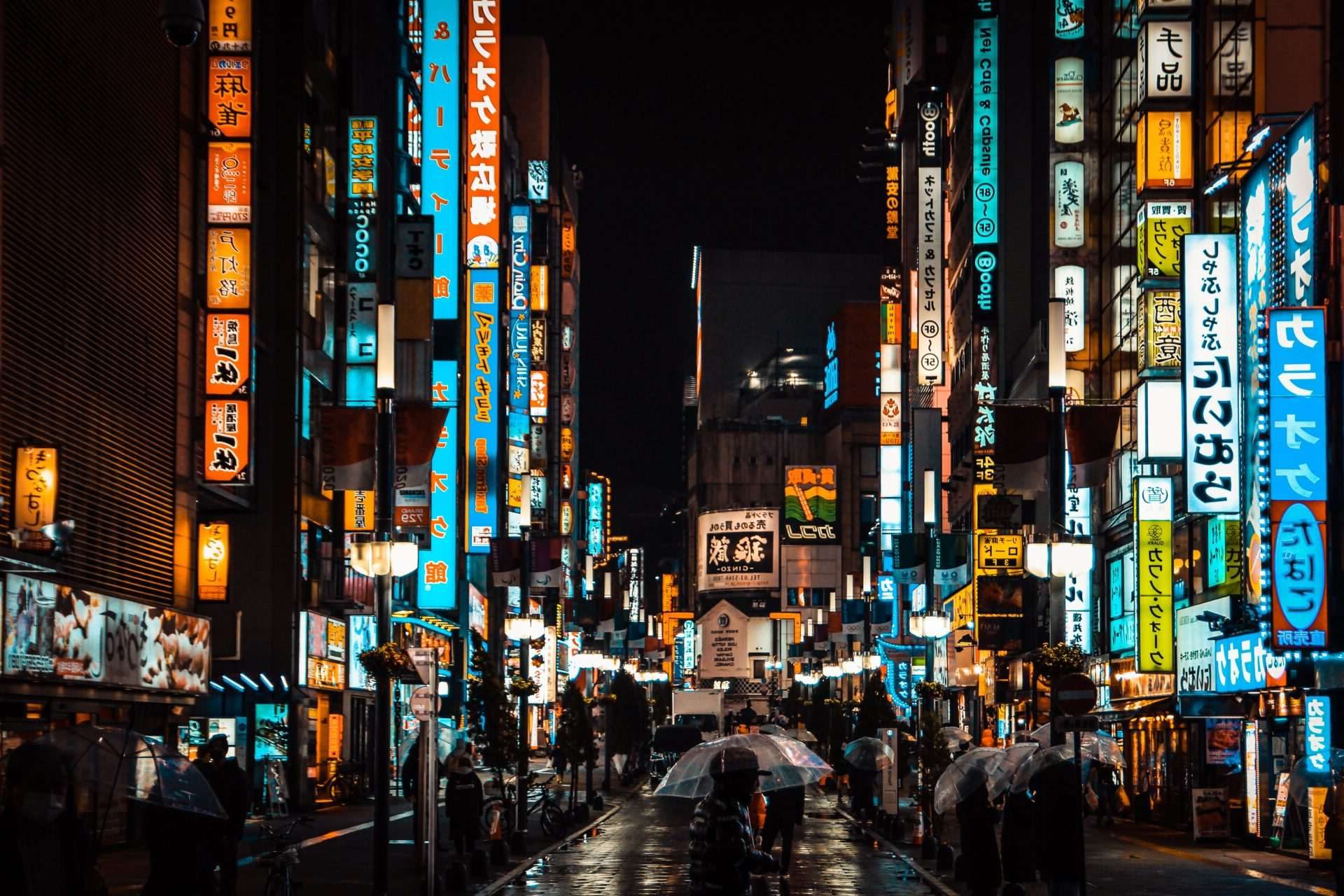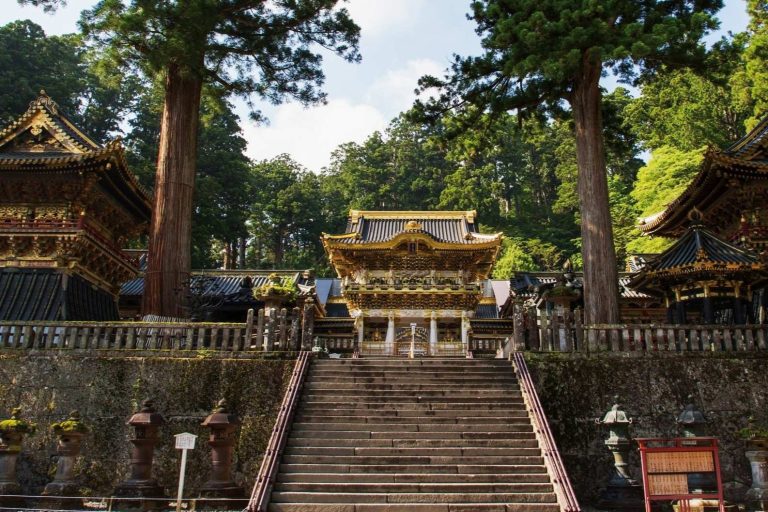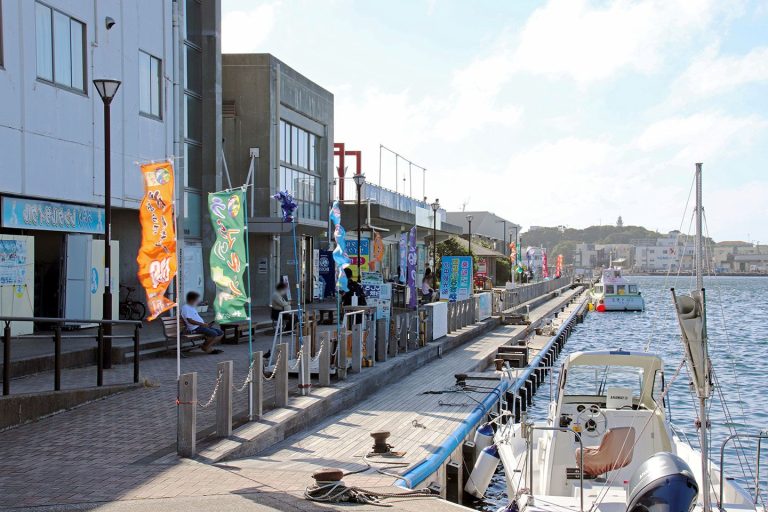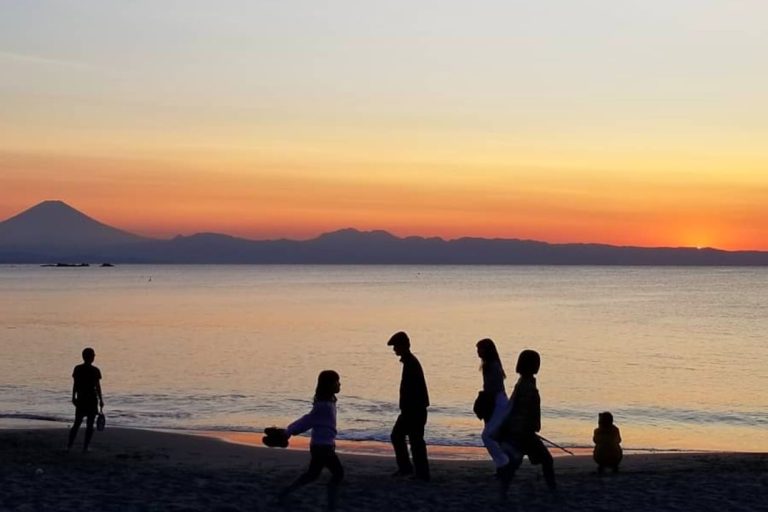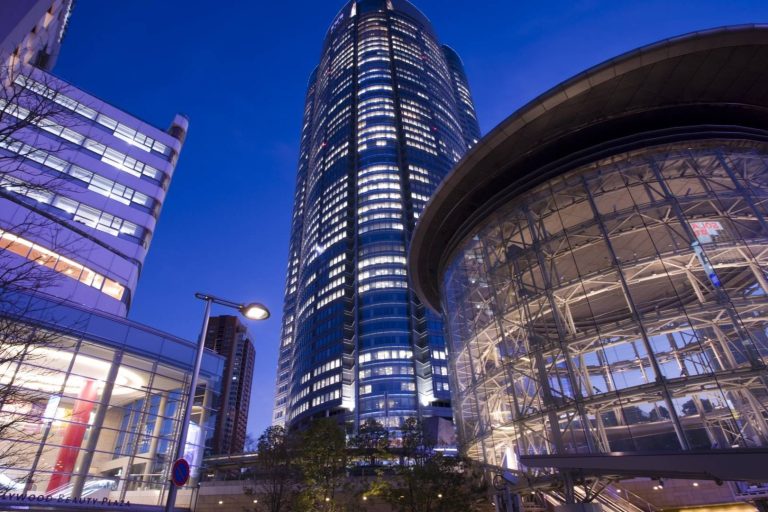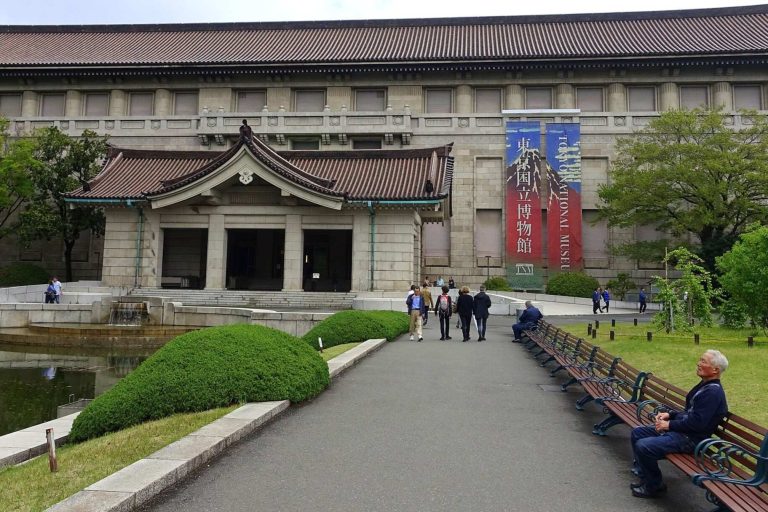Shinjuku’s Electric Energy Never Sleeps
Shinjuku pulses with an energy unlike anywhere else on Earth. This sprawling district serves as Tokyo’s beating heart, where over 3.5 million people flow through its central station daily, creating a human river that never stops moving. Towering skyscrapers pierce the sky while neon signs paint the streets in electric blues and reds, creating a visual symphony that defines modern Japan.
The neighborhood seamlessly blends the ultra-modern with pockets of traditional charm. Corporate giants occupy gleaming towers during the day, while after dark, narrow alleys come alive with the warm glow of tiny bars and the sizzle of street food. This duality makes Shinjuku a microcosm of Tokyo itself, where ancient traditions coexist with cutting-edge innovation in perfect harmony.
Whether you’re seeking business opportunities, cultural experiences, or simply want to lose yourself in the urban maze, Shinjuku offers something for every traveler. The district’s magnetic pull draws visitors from around the world, each finding their own slice of this incredible urban landscape.
Must-See Attractions That Define Shinjuku
Shinjuku Gyoen National Garden
Amidst the concrete jungle lies an oasis of tranquility that feels worlds away from the bustling streets. Shinjuku Gyoen National Garden spans 144 acres of meticulously maintained landscapes, featuring traditional Japanese gardens, English gardens, and French formal gardens all within one space. Cherry blossoms create a pink canopy in spring, while autumn transforms the grounds into a tapestry of red and gold.
The garden serves as Tokyo’s green lung, offering respite for both locals and tourists. Walking paths wind through different themed sections, each offering unique photo opportunities and peaceful moments for reflection.
Kabukichō’s Nightlife District
Known as Tokyo’s most famous entertainment district, Kabukichō transforms dramatically after sunset. Bright neon signs advertise everything from karaoke boxes to themed restaurants, creating a sensory overload that epitomizes Japanese nightlife culture. The area buzzes with energy as office workers unwind and tourists experience authentic Tokyo after dark.
While the district has a reputation for adult entertainment, it also offers family-friendly attractions like the Godzilla Head perched atop the Toho Building. The streets are generally safe, though visitors should stay aware of their surroundings and politely decline any street solicitations.
Golden Gai’s Unique Bars
Golden Gai represents Tokyo’s most intimate drinking culture, with over 200 tiny bars packed into just a few narrow alleys. Each establishment typically seats only 4-6 people, creating an atmosphere where strangers become friends over shared drinks. The wooden structures date back decades, preserving a slice of old Tokyo that feels frozen in time.
Many bars have specific themes or cater to particular crowds, from writers and artists to salarymen seeking quiet conversation. The cover charges vary, but the experience of drinking in these miniature establishments remains unmatched anywhere in the world.
New York Bar and Its Popularity
Perched on the 52nd floor of the Park Hyatt Tokyo, the New York Bar gained international fame after appearing in the film ‘Lost in Translation.’ The bar offers stunning panoramic views of Tokyo’s skyline while serving premium cocktails and featuring live jazz performances. Though currently closed for renovations until October 2025, it remains an iconic destination for sophisticated nightlife.
The bar’s elegant atmosphere and breathtaking views make it a favorite for special occasions and romantic evenings. Reservations are typically required, and the dress code leans toward smart casual or business attire.
Shinjuku Station: A Transportation Hub
Shinjuku Station holds the Guinness World Record as the busiest train station globally, serving multiple JR lines, subway systems, and private railways. The station complex resembles an underground city, complete with shopping areas, restaurants, and countless exit points that can confuse even seasoned travelers.
Navigating the station requires patience and preparation, but its connectivity makes it invaluable for accessing all parts of Tokyo and beyond. Direct connections to both Narita and Haneda airports make it a crucial gateway for international visitors.
Culinary Adventures Await Around Every Corner
Traditional Yakitori Alleys
Memory Lane (Omoide Yokocho) transports visitors back to post-war Japan with its narrow alleys lined with tiny yakitori stalls. Smoke from grilling chicken skewers fills the air while patrons squeeze onto small stools, creating an authentic communal dining experience. The intimate setting encourages conversation between strangers, embodying Japan’s spirit of hospitality.
Each stall has its own character and specialties, from perfectly grilled chicken hearts to tender thigh meat glazed with sweet tare sauce. The atmosphere becomes particularly lively in the evening when office workers stop for quick meals and drinks before heading home.
High-End Department Store Food Halls
Shinjuku’s department stores feature basement food halls (depachika) that showcase Japan’s culinary artistry. These underground markets offer everything from exquisitely crafted bento boxes to premium wagyu beef, all presented with meticulous attention to detail. The quality rivals high-end restaurants while remaining accessible for casual dining.
Sampling stations allow visitors to taste before purchasing, while seasonal specialties highlight Japan’s connection to natural cycles. The presentation alone makes these food halls worth visiting, even for those not planning to purchase anything.
Diverse International Cuisine
Shinjuku’s international character shines through its diverse restaurant scene. Korean barbecue restaurants cluster in nearby Shin-Okubo, while Italian, French, and Southeast Asian establishments dot the district. This variety reflects Tokyo’s cosmopolitan nature and provides familiar flavors for homesick travelers.
Many restaurants offer lunch sets at reasonable prices, making international cuisine accessible to budget-conscious diners. The quality often exceeds expectations, as Japanese attention to detail elevates even simple dishes to new heights.
Late-Night Food Choices
When hunger strikes after midnight, Shinjuku delivers with numerous 24-hour options. Convenience stores offer surprisingly good prepared foods, while late-night ramen shops serve steaming bowls to night owls and early commuters. Don Quijote, the famous discount chain, stocks everything from snacks to full meals at any hour.
Vending machines throughout the district provide hot drinks and light snacks, ensuring no one goes hungry regardless of the time. This round-the-clock food culture supports Shinjuku’s reputation as a district that truly never sleeps.
Street Food Experiences
Street vendors and small stalls offer quick, delicious meals perfect for eating on the go. Takoyaki (octopus balls), taiyaki (fish-shaped pastries), and imagawayaki (round pancakes with filling) provide authentic Japanese street food experiences. These affordable treats allow visitors to sample local flavors without committing to full restaurant meals.
Seasonal specialties appear throughout the year, from summer kakigori (shaved ice) to winter taiyaki filled with warm sweet potato. The casual nature of street food dining encourages exploration and spontaneous culinary discoveries.
Shopping Paradise for Every Budget and Style
Fashion Boutiques and Department Stores
Shinjuku’s shopping landscape ranges from luxury department stores to quirky independent boutiques. Takashimaya Times Square and Lumine house international brands alongside Japanese designers, while smaller shops tucked into side streets offer unique finds. The diversity ensures every fashion taste and budget finds satisfaction.
Seasonal sales and tax-free shopping for tourists make luxury items more accessible. Many stores provide English-speaking staff and international shipping services, simplifying the shopping experience for foreign visitors.
Electronics Shops and Gadgets
While not as concentrated as nearby Akihabara electronics and anime district, Shinjuku offers plenty of opportunities to purchase the latest Japanese technology. Large electronics retailers like Yodobashi Camera provide comprehensive selections with competitive prices and tax-free shopping options.
Smaller specialty shops focus on specific categories like cameras, audio equipment, or mobile accessories. The knowledgeable staff often speak multiple languages and can explain product features and compatibility with international standards.
Unique Souvenir Shops
Beyond typical tourist trinkets, Shinjuku offers unique souvenirs that capture Japanese culture authentically. Traditional craft shops sell handmade items like furoshiki wrapping cloths, ceramic pieces, and calligraphy supplies. These purchases provide meaningful connections to Japanese artistry and traditions.
Character goods from popular anime and manga series are abundant, appealing to fans of Japanese pop culture. Limited edition items and regional specialties make excellent gifts that can’t be found elsewhere.
Shopping Malls and Outlets
Large shopping complexes like Flags and NEWoMan integrate retail, dining, and entertainment under one roof. These modern malls offer air-conditioned comfort and diverse options, making them ideal for extended shopping sessions. Many connect directly to train stations, providing convenient access without weather concerns.
Outlet sections within these complexes offer discounted items from previous seasons, allowing budget-conscious shoppers to access quality goods at reduced prices. The selection changes frequently, encouraging repeat visits.
Cultural and Artistic Goods
Art supply stores cater to Japan’s strong creative culture, offering high-quality materials for traditional and contemporary art forms. Bookstores feature extensive manga and art book selections, while music stores stock both mainstream and independent releases.
These specialized shops provide insights into Japanese creative industries and offer unique items for culturally curious visitors. Many products represent Japanese innovations in their respective fields, combining functionality with aesthetic appeal.
Nightlife That Defines Tokyo After Dark
Overview of Nightlife Options
Shinjuku’s nightlife scene caters to every preference and energy level. From quiet wine bars perfect for intimate conversations to pulsing nightclubs where DJs spin until dawn, the options seem endless. The district’s vertical nature means entertainment venues occupy multiple floors of buildings, maximizing space and creating distinct atmospheres within close proximity.
Most venues welcome international visitors, with many staff members speaking basic English. The Japanese concept of hospitality (omotenashi) ensures guests feel welcome regardless of language barriers, creating positive experiences that encourage return visits.
Clubs and Dance Venues
Shinjuku’s club scene rivals any major international city, with venues featuring world-class sound systems and lighting. Clubs like Womb and Contact attract both local and international DJs, creating dance floors where music transcends cultural boundaries. The crowds are diverse, mixing Japanese party-goers with tourists and expatriates.
Entry fees vary depending on the venue and event, with many clubs offering discounts for early arrival or advance ticket purchases. Dress codes tend to be relaxed compared to some Western cities, though overly casual attire may be discouraged at upscale venues.
Live Music and Performance Bars
Intimate venues throughout Shinjuku showcase live music ranging from jazz and blues to rock and experimental sounds. Many bars feature regular performers who develop relationships with audiences, creating community atmospheres around shared musical appreciation. These venues offer alternatives to large concert halls, providing close-up experiences with talented musicians.
Some establishments encourage audience participation, while others maintain quiet, listening-focused environments. The variety ensures music lovers can find their preferred atmosphere and discover new artists in comfortable settings.
Safety Tips for Nighttime Outings
Shinjuku remains relatively safe even late at night, but visitors should exercise standard urban precautions. Avoiding obviously intoxicated individuals and declining persistent street solicitations helps prevent uncomfortable situations. Staying in well-lit, populated areas and keeping valuables secure reduces risks significantly.
Police boxes (koban) are strategically located throughout the district, and officers typically speak some English. Taxi services operate throughout the night, providing safe transportation back to accommodations when trains stop running.
Cultural Events and Festivals
Seasonal festivals and cultural events add special energy to Shinjuku’s nightlife calendar. Summer festivals feature outdoor stages and food stalls, while winter illuminations create magical atmospheres perfect for evening strolls. These events showcase Japanese cultural traditions alongside modern entertainment.
Many venues host special themed nights celebrating various aspects of Japanese or international culture. These events provide opportunities to experience local customs while meeting people who share similar interests.
Getting Around Tokyo’s Busiest Transport Hub
Train and Subway Lines
Shinjuku Station serves as a crucial intersection for Tokyo’s rail network, connecting JR Yamanote, Chuo, and Sobu lines with multiple subway systems. The complexity can overwhelm first-time visitors, but the comprehensive coverage makes reaching any Tokyo destination possible. Platform numbering and color-coded signs help navigate the maze-like structure.
IC cards like Suica and Pasmo simplify fare payments and work across all rail systems. Rush hours (7-9 AM and 5-7 PM) bring intense crowding that provides authentic Tokyo experiences but may challenge comfort levels.
Airport Connections
Direct connections to both Narita and Haneda airports make Shinjuku an ideal base for international travelers. The Narita Express provides comfortable, reserved seating for the journey to Narita, while various routes serve Haneda with different speed and price options. These connections eliminate the need for complex transfers when arriving or departing Tokyo.
Luggage storage services throughout the station allow hands-free exploration of the district while waiting for flights. Many hotels also offer luggage forwarding services to airports, further simplifying travel logistics.
Navigating Shinjuku Station
Shinjuku Station’s size and complexity require patience and preparation. Multiple levels, numerous exits, and constant construction can confuse even experienced users. Smartphone apps with offline maps help maintain orientation, while station staff provide assistance when needed.
Meeting points like the famous Studio Alta screen or the distinctive clock provide reliable landmarks for coordinating with others. Allowing extra time for navigation prevents stress and missed appointments.
Public Transport Tips
Understanding Tokyo’s transport etiquette enhances the experience for everyone. Removing backpacks, offering priority seats to those in need, and keeping conversations quiet show respect for fellow passengers. These small gestures contribute to the system’s remarkable efficiency and civility.
Last train times vary by line, typically ending between midnight and 12:30 AM. Missing the last train necessitates expensive taxi rides or waiting until service resumes around 5 AM, so planning return journeys is essential.
Bicycle and Walking Routes
While trains dominate transportation, walking and cycling offer alternative ways to experience Shinjuku. Wide sidewalks accommodate pedestrian traffic, though crossing signals require patience during busy periods. Bicycle rental services provide eco-friendly options for short-distance travel, though navigating traffic requires confidence and attention.
Walking between nearby districts like Shibuya nightlife and shopping or Harajuku fashion and culture provides opportunities to see Tokyo’s urban landscape up close. These journeys reveal details invisible from train windows and allow spontaneous discoveries along the way.
Where Ancient Traditions Meet Modern Innovation
Blend of Tradition and Modernity
Shinjuku perfectly embodies Tokyo’s ability to honor its past while embracing the future. Ancient shrines tucked between skyscrapers provide spiritual spaces for busy urbanites, while traditional crafts are sold alongside cutting-edge technology. This juxtaposition creates a unique cultural landscape found nowhere else in the world.
Daily life in Shinjuku reflects this blend, as salarymen in modern suits pray at small shrines before important meetings, and traditional festivals parade through streets lined with neon signs. The seamless integration demonstrates Japan’s skill at cultural preservation within rapid modernization.
Cultural Institutions and Museums
Several museums and cultural centers within and near Shinjuku showcase different aspects of Japanese heritage and contemporary culture. The Tokyo Metropolitan Government Building offers free observation decks with panoramic city views, while smaller galleries feature rotating exhibitions of local and international artists.
These institutions provide educational opportunities alongside entertainment, helping visitors understand the complex layers of Japanese society. Many offer English explanations and guided tours, making cultural content accessible to international audiences.
Art Galleries and Exhibitions
Shinjuku’s artistic scene extends beyond major museums to include numerous small galleries and alternative spaces. These venues often feature experimental works and emerging artists, providing glimpses into Japan’s contemporary creative movements. The diversity ranges from traditional painting and sculpture to digital art and interactive installations.
Many galleries stay open late, allowing art appreciation to blend with nightlife activities. Opening receptions and artist talks create opportunities to meet creative professionals and gain insights into Japanese artistic processes and philosophies.
Local Festivals and Events
Seasonal festivals bring traditional culture directly to Shinjuku’s modern streets. Summer matsuri feature portable shrines carried through crowds while taiko drums provide rhythmic soundtracks. These events transform ordinary urban spaces into celebration venues where community bonds strengthen.
Participation is often welcomed, allowing visitors to experience Japanese festival culture firsthand. The contrast between ancient rituals and contemporary settings creates memorable experiences that capture Tokyo’s cultural complexity.
Historical Landmarks and Their Stories
While Shinjuku appears thoroughly modern, historical sites scattered throughout the district tell stories of Tokyo’s evolution. Small shrines and temples preserve spiritual traditions, while historical markers explain the area’s transformation from rural farmland to urban center.
These landmarks provide context for understanding how Tokyo developed into its current form. Guided walking tours often highlight these sites while explaining their significance within Japanese history and culture, similar to experiences found when exploring Kamakura temples and coastal trails in the ancient capital.
Tomorrow’s Shinjuku Takes Shape Today
Urban Redevelopment Initiatives
Shinjuku continues evolving through ambitious redevelopment projects that balance growth with livability. New mixed-use complexes integrate residential, commercial, and office spaces while incorporating green areas and public amenities. These developments aim to create more sustainable urban environments that improve quality of life for residents and visitors.
Smart city technologies are being integrated into new construction, including energy-efficient systems and digital infrastructure that supports modern connectivity needs. These innovations position Shinjuku as a model for future urban development in Japan and internationally.
Enhancing Public Spaces
City planners are prioritizing the creation and improvement of public spaces that provide respite from urban intensity. New parks and plazas offer green spaces for relaxation and community gatherings, while improved pedestrian areas make walking more pleasant and safe.
These enhancements recognize the importance of human-scale spaces within dense urban environments. The goal is creating a more balanced cityscape where people can connect with nature and each other despite the surrounding metropolitan intensity.
Disaster Resilience Projects
Japan’s experience with natural disasters drives ongoing efforts to improve Shinjuku’s resilience and emergency preparedness. New buildings incorporate advanced seismic engineering, while emergency supply caches and evacuation routes are strategically positioned throughout the district.
Communication systems and emergency protocols are regularly updated to ensure effective responses to various disaster scenarios. These preparations reflect Japanese commitment to protecting both residents and the millions of daily visitors who pass through the area.
Tourism Revitalization Plans
Post-pandemic recovery efforts focus on attracting international visitors while supporting local businesses that depend on tourism revenue. Marketing campaigns highlight Shinjuku’s unique attractions while infrastructure improvements enhance visitor experiences and accessibility.
New tourist information centers and multilingual signage make navigation easier for international guests. These efforts aim to restore pre-pandemic visitor numbers while creating more sustainable tourism patterns that benefit local communities.
Community Engagement and Participation
Future development plans emphasize community input and participation in shaping Shinjuku’s evolution. Public forums and consultation processes ensure resident voices are heard in planning decisions, while volunteer programs encourage active participation in neighborhood improvement projects.
This approach recognizes that successful urban development requires support from people who live and work in the area. By fostering community ownership of development processes, planners hope to create changes that truly serve local needs and preferences.
Frequently Asked Questions
What are the main attractions in Shinjuku?
Shinjuku’s main attractions include Shinjuku Gyoen National Garden, Kabukichō nightlife district, Golden Gai bars, and the New York Bar.
How can I get around Shinjuku?
Shinjuku Station is the busiest train station in the world, offering access to multiple train and subway lines. Walking and cycling are also popular options for exploring the area.
What types of food can I find in Shinjuku?
Shinjuku offers a diverse culinary scene, including traditional yakitori, high-end department store food halls, international cuisine, and vibrant street food options.
Is Shinjuku safe at night?
Yes, Shinjuku is generally safe at night, but visitors should exercise standard urban precautions and be aware of their surroundings.
What is the significance of Shinjuku’s blend of tradition and modernity?
Shinjuku embodies the coexistence of ancient traditions and modern innovation, showcasing shrines alongside skyscrapers and historical sites within a contemporary urban landscape.
The Dynamic Pulse of Shinjuku
As a microcosm of Tokyo’s energy and diversity, Shinjuku represents a unique fusion of the old and the new. Its vibrant nightlife, culinary offerings, and cultural landmarks create an unforgettable experience, making it a must-visit destination for anyone exploring the heart of Japan’s capital.
